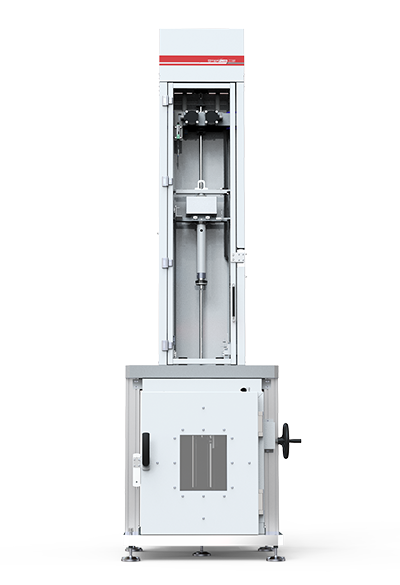What is an impact test?
An impact test is designed to replicate situations in which an object or material will react when subjected to an impact load that instantaneously causes the specimen to deform, fracture or completely break. These tests evaluate the material’s ability to absorb energy during impact and to resist the forces occurring in these situations. They measure resilience and impact resistance, which are essential properties for ensuring the safety and reliability of a wide range of materials and products in different sectors.
This page gives a detailed overview of what impact tests are, how they are conducted and the appropriate testing machines.
What is the purpose of impact tests?
The main objective of impact tests is to evaluate the behaviour of an object or material in the presence of an impact. This is essential for:
- Determine the ability of a material to absorb energy and resist deformation in collision situations.
- Identify and understand the critical points of a product or structure, enabling design improvements.
- Assessing and ensuring the safety of vehicles, protective equipment, building materials and more.
How are impact tests performed?
To perform an impact test, the specimen is placed in a special support structure with the geometry and orientation determined by the type of test used, and then a known weight, usually but not always in the form of a pendulum, is released from a known height so that it collides with the specimen with a sudden force. This collision between the weight and the sample generally leads to the destruction of the sample, but the energy transfer between the two is used to determine the fracture mechanics of the material.
During the test, key parameters are measured, including the force of the impact, the deformation of the sample and the amount of energy absorbed. The data collected is then used to evaluate the performance of the material or product.
Charpy and Izod test
The most popular impact tests are the Charpy test and the Izod test. These two tests determine essentially the same material characteristics, but differ in the orientation of the test sample, which causes the sample to be stressed in different directions and involves a known weight released from a known height colliding with the sample in its test structure.
- The Charpy test is a widely used test to measure the resilience of materials. This test involves placing a V-shaped specimen on a stand and using a pendant hammer. The hammer is released, strikes the sample, and the breakage of the sample is measured. The amount of energy absorbed during sample breakage is a key indicator of the material’s resilience.
- The Izod test is similar to the Charpy test, but the sample is positioned differently. In this test, the sample is fixed horizontally, and the hammer strikes the opposite side of the sample. This test is used to assess the impact resistance of fragile materials.
The most common impact tests
- ASTM D1709 – Impact resistance of plastic films using the free-fall arrow method.
- ASTM D3763 – High-speed drilling properties of plastic materials using load and displacement sensors.
- ASTM D5420 – Impact resistance of a rigid plastic flat specimen by point impact with a falling weight (Gardner impact).
- ASTM E208 – Impact test on notched bars of metallic materials.
- ISO 13802 – Charpy, Izod and tensile tests.
- ISO 148 – Charpy impact test.
- ISO 179 – Determination of Charpy impact properties.
- ISO 6603 – Determination of perforation impact behaviour of rigid plastic materials.
- ISO 7765 – Performance of the weight drop test to determine the non-ductile transition temperature of ferritic steels (Pellini test).
- ISO 10274 – Tear test with falling weight.
Impact Testing Machine
Impact tests require the use of specialised impact testing machines. These machines are designed to generate controlled impacts on samples and precisely measure the change in properties of the material or product under test. Impact testing machines are essential to ensure that tests are accurate, reproducible and comply with standards.
DW SERIES – DROP WEIGHT TOWERS
HTM high-speed testing machines can be widely used for plastics testing. They are characterised by high test speed and wide force ranges and can be used flexibly in tensile and compression tests. In addition, they can be equipped with a climatic chamber to perform tests at different temperatures.
Features
- Wide range of accessories
- Impact energy 0.2 to 2000J
- Continuous drop rate reading
- Ease of use thanks to an intuitive user interface
- High security, thanks to door locks that are activated when the machine is reset
- Pneumatic drop weight release system
- Automated weight lifting and positioning
- Variable drop height
- Impact speed up to 5.0 m/s (up to 20 m/s with spring preloading system)
- Set of standard drop weights: weights from 0.5 to 10 kg, a total of 70 kg
- Acquisition of impact velocity at 200 kHz
- Force signal acquisition rate up to 10 MHz
- Rapid changeover from ISO to ASTM test equipment and vice versa
- Wide variety of grips, dedicated test accessories
- Integration with both strain gauge and piezoelectric load cells



